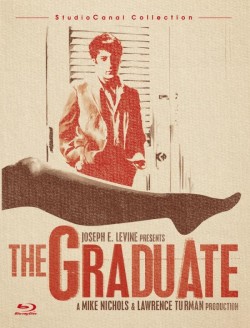NEW YORK TIMES: Mike Nichols, one of America’s most celebrated directors, whose long, protean résumé of critic- and crowd-pleasing work earned him adulation both on Broadway and in Hollywood, died on Wednesday in Manhattan. He was 83. Dryly urbane, Mr. Nichols had a gift for communicating with actors and a keen comic timing, which he honed early in his career as half of the popular sketch-comedy team Nichols and May. An immigrant whose work was marked by trenchant perceptions of American culture, he achieved — in films like “The Graduate,” “Who’s Afraid of Virginia Woolf?” and “Carnal Knowledge” and in comedies and dramas on stage — what Orson Welles and Elia Kazan but few if any other directors have: popular and artistic success in both film and theater. An almost ritual prize-winner, he was one of only a dozen or so people to have won an Oscar, a Tony, an Emmy and a Grammy.
His career encompassed an entire era of screen and stage entertainment. On Broadway, where he won an astonishing nine Tonys (including two as a producer), he once had four shows running simultaneously. He directed Neil Simon’s early comedies “Barefoot in the Park” and “The Odd Couple” in the 1960s, the zany Monty Python musical, “Spamalot,” four decades later, and nearly another decade after that, an acclaimed revival of Arthur Miller’s bruising masterpiece, “Death of a Salesman.” […] By the end of Mr. Nichols’s career, he was bravely casting  the star Hoffman of a different generation — Philip Seymour — with whom Mr. Nichols made the rollicking political film “Charlie Wilson’s War” (2007) and, later, more provocatively, the Broadway production of “Death of a Salesman.” He cast Mr. Hoffman, then 44, to play Miller’s tragic American in defeat, Willy Loman, a man in his 60s. […] In June 2012 at age 80, he accepted the Tony for directing “Salesman.” When his name was announced at the Beacon Theater on the Upper West Side of Manhattan, the neighborhood where he grew up, he kissed Ms. Sawyer, stepped to the stage and recalled that he once won a pie-eating contest in that very theater. “It was nice but this is nicer,” he said. “You see before you a happy man.” MORE
the star Hoffman of a different generation — Philip Seymour — with whom Mr. Nichols made the rollicking political film “Charlie Wilson’s War” (2007) and, later, more provocatively, the Broadway production of “Death of a Salesman.” He cast Mr. Hoffman, then 44, to play Miller’s tragic American in defeat, Willy Loman, a man in his 60s. […] In June 2012 at age 80, he accepted the Tony for directing “Salesman.” When his name was announced at the Beacon Theater on the Upper West Side of Manhattan, the neighborhood where he grew up, he kissed Ms. Sawyer, stepped to the stage and recalled that he once won a pie-eating contest in that very theater. “It was nice but this is nicer,” he said. “You see before you a happy man.” MORE
RELATED: Especially consistent was his wry and savvy sensibility regarding behavior, derived in part from his early success in nightclubs and on television with Ms. May. Their program of satirical sketches depicting one-on-one moments of social interaction reached Broadway, where “An Evening With Mike Nichols and Elaine May” opened in October 1960 and ran for more than 300 performances; the recording of their show won a Grammy Award. Developed through improvisation, written with sly, verbal dexterity and performed with cannily calibrated comic timing, a sharp eye for the telling gesture and an often nasal vocal tone that both of them employed, their best known routines became classics of male-female miscommunication and social haplessness: a mother haranguing her scientist son for not calling her; teenagers on a date in the front seat of a car; an injured man and a doltish emergency room nurse; a telephone operator and a desperate caller in a phone booth. Their work, along with the cartoons of Mr. Feiffer and the stand-up routines of Bob Newhart and a young Mr. Allen defined comic neurosis for the American audience before it became a staple in the hands of Albert Brooks, Richard Lewis and countless others. MORE

![Mike Nichols and Elaine May [3]](http://www.phawker.com/wp-content/uploads/2014/11/Mike-Nichols-and-Elaine-May-3-e1416509762866.jpg)